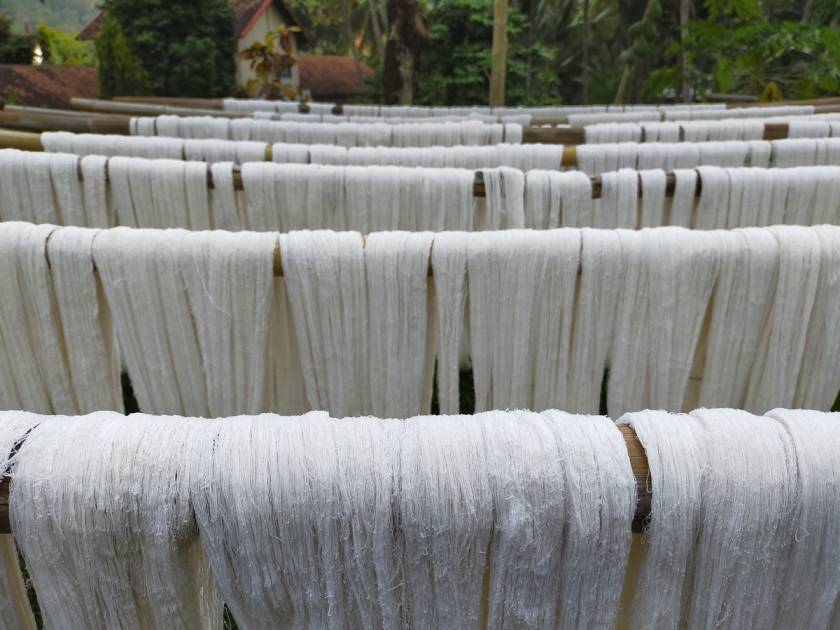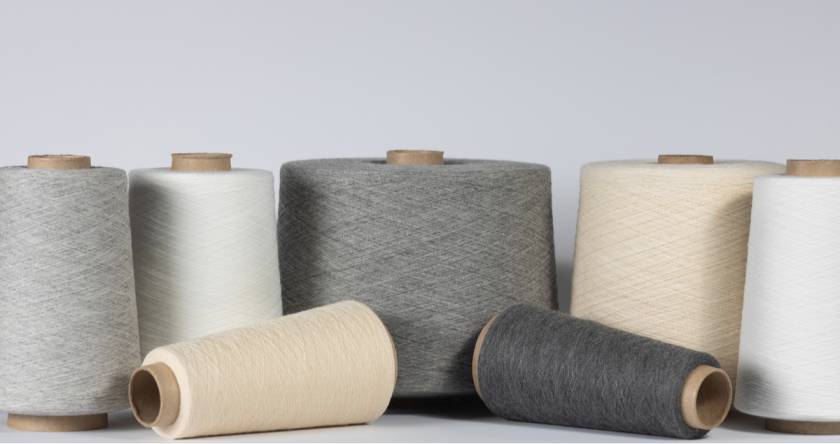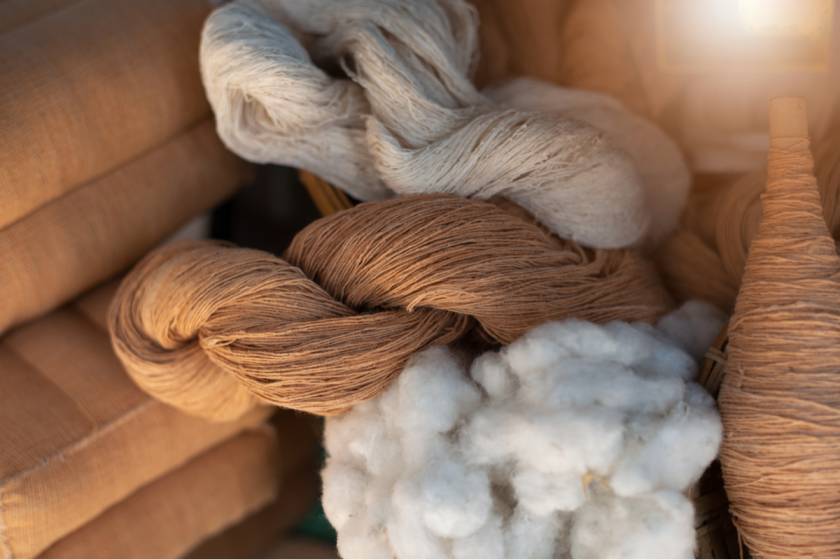Cotton Yarn: Latest Prices, Trends, and Exporting Countries



Cotton yarn is a very versatile product and is widely used in different industries. This is not just because of its versatility, but also because of the high demand for this product. One in every two people wears clothes made from cotton.
India has been renowned to have the second-largest cotton yarn spinning capacity. The top competitor is China. According to the recent reports, India produced over 4,700 million kgs of spun yarn. Out of this, nearly 3,400 million kgs is used for creating cotton yarn. Therefore, cotton yarn becomes 73% of the total spun yarn production. The modern Indian cotton spinning industry is quite efficient. However, some mills have failed to perform according to the latest statistics.
The market size of Global Cotton Yarn was expected to be approximately USD 54.78 billion in 2020. Now, it is projected to reach approximately USD 58.45 billion by 2021. It has been growing at a 7.02% compound annual growth rate (CAGR) between 2016 and 2026. Rising demand for soft, light and comfortable cotton garments from the textile industry is expected to be a key factor driving the growth of the market.
Recent Trends in the Demand for Indian Cotton Yarn
- Cotton yarn has multiple applications in fashion, clothing, home textiles, hosiery, and industrial fabrics.
- The cotton yarns of India are available in a range of varieties, perfect for multiple uses. They are available as twisted, greige, gassed, dyed, bleached, mercerized, along with a fantastic range of fashion yarns.
- You can find everything from blends, mélange, high twists, stretch, and more.
- With world-famous companies like Arvind, Aarvee, Raymond, Jindal, Pratap Spintex, Etco Denim, and others, India is the world's largest denim producer as well.
Even today, despite some setbacks, international markets continue to demand high-quality Indian cotton yarn. This is mainly because exporters consistently perform as per the demands of importers in multiple countries. These include developed nations such as the United States, China, Japan, South Korea, Taiwan, and also other South-Asian countries like Bangladesh, and Vietnam. European nations like Italy and Spain are also popular importers of Indian cotton yarn.
The Indian cotton yarns have been widely exported with unsurpassed efficiency and have immensely contributed to the nation’s economy. India has already seen a glorious trend in exporting fabric of the highest quality even before its colonization under the British. Textile industries contributed almost 17% of the country’s GDP in the year 2017-18.
The Effect of the Pandemic on the Cotton Yarn Industry

The Covid-19 pandemic has had a severe impact on the demand for raw cotton, a crucial material used to make cotton yarn. Because of this, the price and production levels of cotton have decreased substantially. Environmental regulation in India makes it difficult to produce cotton domestically. As a result, manufacturing companies are forced to import raw cotton from China, Vietnam, and other countries, which increases the final cost of cotton yarn.
The manufacturing cost of cotton yarn has not kept up with the increasing prices of raw materials. On top of that, the lack of incentives to manufacturers has not helped either. The fabric export growth has been only 0.38% year-on-year even before the pandemic. Artificially grown yarn and fabrics have seen 6% growth during the same time period, giving cotton spun yarn a run for its money.
Low domestic demand combined with a drop in exports, mandated by the Ministry of Textiles recently before the pandemic, has resulted in an excess of cotton yarn in the country, affecting the overall spinning industry. Mill owners have been struggling to get credit lines for purchasing raw cotton since there is a lot of competition. When migrant workers in India left for their home states due to a national lockdown, mill owners faced a scarcity of workforce and had to accommodate for lower production, higher labor costs, and acute labor shortage.
Meeting the Growing Demand for Cotton Yarn
Raw cotton is a primary product in the textile manufacturing industry. Global demand for it has increased over the past years, causing an increase in price by about 11%. Cotton yarn producers are feeling the blow since these prices are too high to keep up with. India’s domestic consumption of cotton yarn has decreased almost 3% compared to last year, but close to 7% when compared to three years ago. Contrasting this trend with overall increased global cotton production leads us to believe that there is room for improvement in this market both locally and internationally.
This trend has also been fueled by rising commodity prices in general. Local administration support in terms of a steady power supply and lack of concessional rates on manufacturing equipment has left this industry still. Using obsolete machinery and suffering from low productivity of labor is another problem to deal with.
Post-GST and a lack of export incentives by the government have left manufacturers uncompetitive and slow to make improvements to production and logistics. Bangladesh is a country that gets duty-free access to global markets. Such competitions have made growth difficult. Stiff competition comes also from other South-East Asian countries as well like the Philippines and Thailand.
Price trends of Cotton Yarn

Let’s look at some recent trends on the rise and fall of prices affected by the fluctuations of trading cotton yarn:
- Cotton yarn exports fell by 29.4 % in value to US $2,760.51 in 2019-20, down from US $3,895.52 in 2018-19.
- India's highest exporting countries remained Bangladesh, China, and Egypt.
- In 2019-20, India exported cotton yarn worth US $590.57 million to Bangladesh (a decrease of 20.03 %), US $590.57 million to China (a decrease of 53.92 %), and US $ 181.79 million to Egypt (a decrease of 1.11 %).
- Vietnam has shown growth in China's massive imports of cotton yarn from 7.61% in 2009 to 36.66% in 2018. On the other hand, for India, it has increased from 7.75% to 21.74% during the same period.
- India also faces adverse duty challenges in export markets vis-à-vis competing countries.
Whilst Pakistan and Bangladesh levy higher rates of duty on Indian yarn, they are enjoying concessional duty access to India. India is lagging in cotton exports to major markets due to a duty disadvantage as compared against Bangladesh, Vietnam, and Pakistan.
They have been able to distill a competitive advantage with regard to potential competitors' advantages. By means of an artificially cheap manufacturing base for textile products, subsidized power providers alongside government aid, these competitors are witnessing better success rates than India. Bangladesh and Vietnam, for example, have duty-free access to the world's top cotton yarn markets, such as China.
Global Trends of Cotton Yarn
Here is a summary of the network of cotton yarn and the role of India, according to the latest reports:
- China (8.1 million tonnes), India (4.3 million tonnes), and Pakistan (3.2 million tonnes) consumed the most cotton yarn in 2019, accounting for 74% of global consumption.
- Talking about cotton yarn production and consumption, China and Vietnam continue to lead the world because they have duty-free access to global cotton yarn markets. India still continues to pay duty on its exports.
- Over the previous two decades, China's textile industry has seen a tremendous transition. As a result, since the late 1990s, China's synthetic yarn sector has exploded, while cotton yarn output has stayed relatively consistent.
- India (5.3 million tonnes) and Pakistan (3.7 million tonnes) are the other countries producing the most cotton yarn in 2019, accounting for 72% of global production. Turkey, Vietnam, the United States, and Brazil trailed behind with a combined 16%.
In 2019, around 4.5 million tonnes of cotton yarn were imported worldwide, a decrease of -3.1% from the previous year. With an increase of 8.6% year-over-year in 2015, it was the year with the highest rate of growth. As a result, imports peaked at 4.8 million tonnes. Cotton yarn imports fell to $13.7 billion in value in 2019.
Future of Cotton Yarn

Cotton yarn has seen a demand growth in the domestic market this past month, and hence, many small spinners have reopened their mills. National Textile Corporation Ltd. has announced that they're reopening around 40% of their spindle capacity - a great initiative to open idle mills since the lockdown. The increased demand should serve as a strong indicator that things will be back to normal soon.
The Southern India Mills Association (SIMA) has issued a recommendation to all of its member mills. This can help ensure a continuous yarn supply to meet the demands of the knitting and weaving industries while avoiding excessive price fluctuation.
Without a global incentive, any economic boom in this industry is not possible. The government encouraging cottage industries, which can include even a single loom - could provide employment opportunities to crores of unemployed persons. This regulation is being brought about in terms of stabilizing the prices of cotton bales, putting restrictions on the export of its raw materials, and incentivizing daily wage workers with a sustainable guaranteed wage.
Summing Up
Cotton yarn is among the most essential resources for textile production and yet the industry has been baffled by multiple factors apart from the pandemic. As difficulties for workers arise, the entire production in mills, power looms and handlooms can come to a standstill. The demands for cotton yarn have also been affected by the rise of different types of fabrics and materials in the market. With competitive prices and great technology, the fight for cotton yarn can be a difficult one.
However, one must also note that cotton is among the top crops in India and the blows in the market can affect the larger ecosystem. Cotton yarn is among the best materials for manufacturing clothes of all types and can still have great demand for consumers all over the world.
Are you someone looking for a great platform to manufacture clothing? Whether you are a fashion designer or planning to open a successful line of home furnishing, Fashinza can be your best partner. Fashinza offers you the best manufacturers and suppliers to make your fashion dreams a reality. Check the website and get exploring!



















